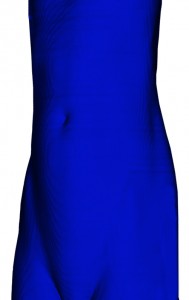Dental Applications
Scanning, rapid prototyping, and specialized 3D applications are highly applicable to the dental field. Individual practitioners within the dental field, as well as large corporations that produce dental products, can benefit from the solutions provided by Tucker Innovations. Recently, many new dental and orthodontic procedures and products have come to market and the trend continues grow. Applications typically involve a combination of scanning impressions, 3D software processing and production of the physical product. Tucker Innovations provides a quick and affordable means of producing the necessary software to enable the latest dental applications.
3D Dental Scan
The image shown was produced using a Tucker Innovations software package that interactively visualizes 3D scans. The scan shows the jaw of a patient with a close-up view showing the fine details of the scan mesh. The mesh is made up of millions of triangles and can be viewed from any angle interactively.

Medical Applications
3D modeling and graphics technology is already embedded into the medical profession in the form of 3D scanning technologies to include computed tomography (CT) and magnetic resonance imaging (MRI). Previously, processing the large amounts of data produced by these systems required specialized and high-priced computing. Today’s graphics processing software provides sufficient computing to process this data on personal computers. Tucker Innovations provides solutions to individual doctors and medical professionals who have access to medical imaging equipment and new ideas on how to use the data produced.



3D Body Scan
The images shown were generated from a real-time visualization package developed by Tucker Innovations and show a dense CT-scan of a female torso. The software allows the user to interactively view the model from different angles and levels of zoom as well as manipulate the transfer function that determines the level of transparency.